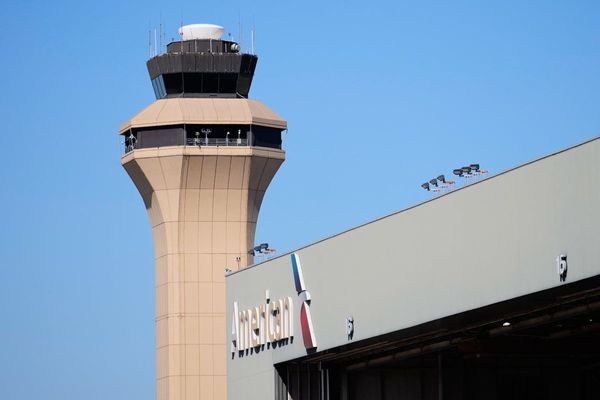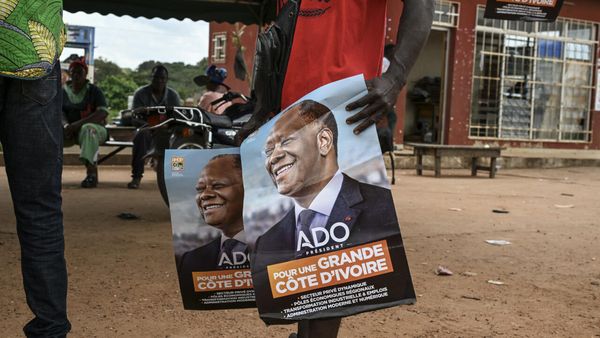
By Christopher Layne
Ordering China to shutter its consulate in Houston is just the latest move in the Trump administration’s hard line approach toward Beijing. Beginning with launching a trade war, the United States is trying to suppress China’s advances in technology by taking aim at Huawei, ramping up the American military presence in East Asia, and imposing sanctions for the new national security law in Hong Kong.
In Taiwan, Foreign Minister Joseph Wu pointed to an “unprecedented” number of Chinese military exercises in the Taiwan Strait, cautioning the increasing risks of conflict. “The threat is on the rise,” he said. These concerns parallel the sharp deterioration in Sino-American relations, which a number of observers have characterized as a second Cold War.

U.S. domestic politics are bitterly polarized, but there is one issue where bipartisanship prevails: China.
The American political class is united in viewing a rising — or, indeed, risen — China as a threat to the U.S. militarily, economically, technologically, and also to American values. The possibility of war between the U.S. and China in the next decade or two is all too real. Taiwan’s unresolved status could ignite such a conflict.
Responsible leaders in Washington, Beijing, and Taipei should all be asking the question that then-General David Petraeus asked during the Iraq War: “Tell me how this ends?”
Historical Background
A good way to start to answer that question is by reviewing the history of the Sino-American relationship, and the role that Taiwan has played. Interestingly, some key U.S. policymakers didn’t always see Taiwan as strategically necessary. After the proclamation of the People’s Republic of China on October 1, 1949, U.S. Secretary of State Dean Acheson — an uber Cold Warrior — was prepared to write off Taiwan.

This attitude changed with the onset of the Korean War in 1950. Taiwan came to play an important strategic and symbolic role in Washington’s Cold War policy. During the Eisenhower administration in 1954 and 1958, the U.S. deployed military forces to deter the PRC from attacking Taiwan. Until the Nixon administration, Sino-American relations remained in a deep freeze. The status of Taiwan was the key sticking point that prevented a resumption of diplomatic relations.
U.S. President Richard Nixon’s 1972 visit to China was one of the most dramatic diplomatic coups in the history of American foreign policy. Mutual fear of the Soviet Union drove this breakthrough that laid the foundation for the U.S. and China to overcome the rupture in their relations caused by the outcome of the Chinese civil war. To reach an accord, Nixon, his national security advisor Henry Kissinger, and Chinese Premier Zhou Enlai had to find a mutually acceptable mechanism for dealing with the question of Taiwan’s status.
The competing claims of Beijing and Taipei were papered over by artful fudging in the Shanghai Communique, in which Beijing asserted that Taiwan was a province of China, and the determination of its status was an internal Chinese matter.
The U.S. side declared that it “acknowledges all Chinese on either side of the Taiwan Strait maintain there is but one China and that Taiwan is a part of China” and that it “does not challenge that position.”
The Shanghai Communique paved the way for the 1979 re-establishment of formal diplomatic relations between the U.S. and China. It also opened the door for China’s integration into the global economy. However, Washington did not cast Taiwan into the cold. The U.S. also established the Taiwan Relations Act in 1979, ensuring that ties between the U.S. and Taiwan would remain close even if unofficial.
Related: What Is Taiwan’s Legal Status According to International Law, Japan, and the US?
Just as China was being transformed by its reform and opening, Taiwan underwent its own metamorphosis. Following Chiang Kai-shek’s death, his son, Chiang Ching-kuo, embarked on a series of domestic political reforms that paved the way for Taiwan’s emergence as a vibrant democracy, and a flourishing economy. He also promoted a policy of Taiwanization, recasting the island’s identity. And in all his political maneuverings, Chiang the younger was responding to a strident opposition movement to the KMT dictatorship.
What has changed since then?
Today, the situation in the Taiwan Strait has become increasingly tenuous for several reasons.
In 1972, China was just emerging from the political, economic, and social upheaval caused by the Great Leap Forward and the Cultural Revolution. China accepted the ambiguities of the Shanghai Communique because it was too weak to alter Taiwan’s status quo.
China is now by some measures the world’s largest economy. China is no longer a rising great power, it has risen. It is seeking regional hegemony in East Asia. This is where things start to become dicey for Taiwan, the U.S., and China.
Chinese President Xi Jinping has declared the “Great Rejuvenation of the Chinese People,” and an end to China’s “Century of Humiliation” that began with its defeat by Britain in the First Opium War (1839-1842). Having gained Hong Kong in 1997, Xi has made clear that Beijing now seeks Taiwan’s unification with China.

China’s imposition of the new national security law in Hong Kong transparently was a violation of the terms of the agreement between London and Beijing when the city was returned to Chinese sovereignty. By acting as it did, China completely discredited the idea of “one country, two systems” it has proposed as a model for Taiwan.
Even if there was any support in Taiwan for unification, China’s actions in Hong Kong would have extinguished it. More importantly, leaving events in Hong Kong aside, today’s Taiwan barely resembles the Taiwan of 1972 demographically and politically.
In 1972, the KMT helmed a regime in Taiwan that was at least comparably as undemocratic and unfree China’s. Demographically, though the question was not studied at the time, as late as 1996, well over 50 percent of the population described itself as “Chinese and Taiwanese,” much greater than the population that had come over from China with the KMT in the 1940s.
Today, the population of Taiwan overwhelmingly views itself as Taiwanese, not Chinese.
Taiwan as an excuse for a preventive war
Nevertheless, China is unlikely to abandon its goal of unification. The fraught standoff between Taipei and Beijing has no signs of easing. It will be made even more dangerous by the deterioration of Sino-American relations, which will not end with Donald Trump leaving office — either next January, or January 2025.
The Republican party’s emerging stars — each of whom is mentioned as a possible 2024 nominee, are Secretary of State Mike Pompeo, Sen. Marco Rubio, Sen. Josh Hawley, Sen. Tom Cotton, and former UN ambassador Nikki Haley. Each of them advocates a forceful American stance toward China. Each sees China not just as a military, economic, and technological threat to American primacy, but as an ideological threat.
Pompeo recently stated that “the Chinese Communist Party is the central threat of our times.” Not China as a great power and economic rival, but the Chinese Communist Party. All the other emerging Republican stars have said pretty much the same thing. And it’s not just Republicans. Leading figures in the Democratic party, including Democratic presidential candidate Joseph R. Biden, Jr. also view China as a threat.
Increasingly, the U.S. foreign policy establishment views China as an enemy. Some of them — especially among the Republicans — support Taiwan to the hilt. But for reasons that should worry people in Taiwan, and also Americans. Although unspoken, many American hawks are looking for an excuse to fight a “preventive war” with China. For them, Taiwan’s role is to provide that excuse.
Scholars of international relations understand the logic of preventive war: confronted by a fast-rising challenger, a declining hegemon may choose to go to war before its margin of power slips away. Members of the U.S. foreign policy establishment may talk of “unipolarity” and American “primacy” but their collective panic about China gives the game away. Although they will never admit it publicly, they know that the U.S.’s relative power is declining, and that the unipolar world is a thing of the past. Unless, of course, the China threat is stopped in its tracks before it can come to full flower.
An assertive China claiming (as did Germany before World War I) its place in the sun, seeking to avenge past humiliation, is no longer willing to back down in the face of American power. A declining U.S., trying to cling to its waning hegemony in East Asia, is unwilling to give way to an increasingly powerful China. And Taiwan — which values its democracy and has no interest in being part of China — is caught in the middle of this burgeoning great power competition between the U.S. and China.
Any war between the U.S. and China would draw in Taiwan. And it would be a bloody, if not indeed, catastrophic conflict for all. Taipei finds itself walking a diplomatic tightrope. Caution, prudence, and realism must govern its policy. As Minister Wu said, “We need to be extremely cautious. Other than having full military preparedness, we need to also be very careful to avoid letting Taiwan become an excuse for China to declare war or engage militarily.”
Christopher Layne is University Distinguished Professor of International Affairs at Texas A & M University.
READ NEXT: US Shuts China's Houston Consulate; Pompeo Cites Intellectual Property Theft
TNL Editor: Nicholas Haggerty, Daphne K. Lee (@thenewslensintl)
If you enjoyed this article and want to receive more story updates in your news feed, please be sure to follow our Facebook.







